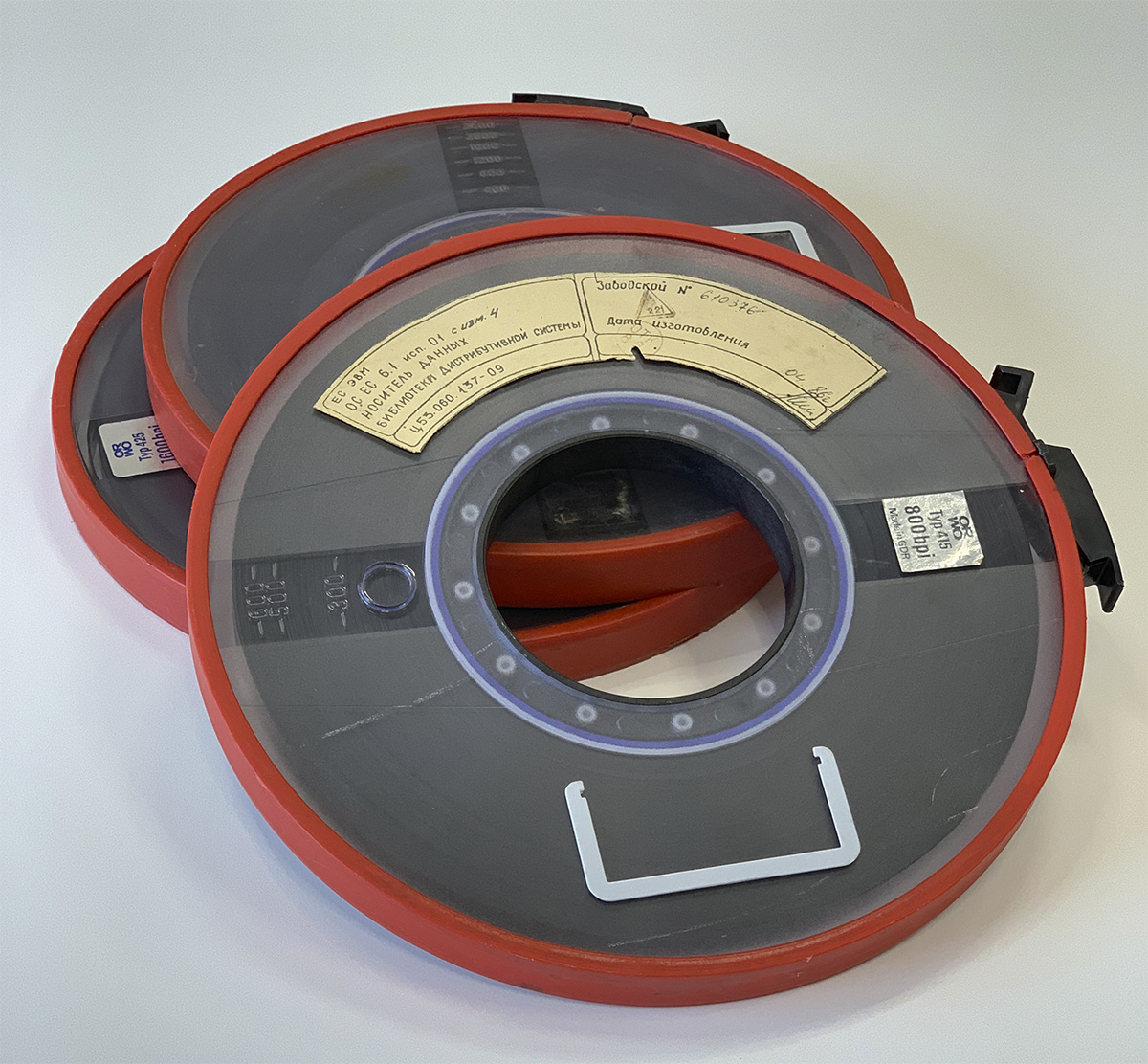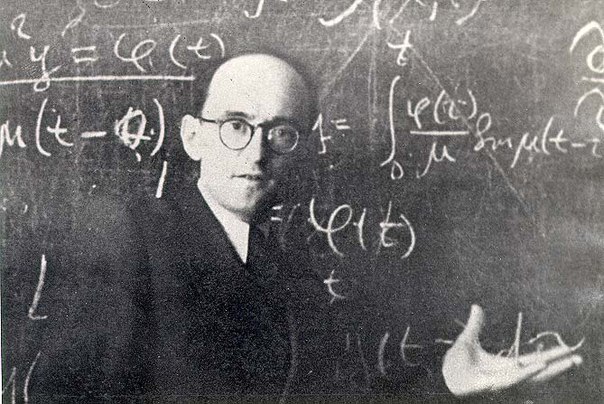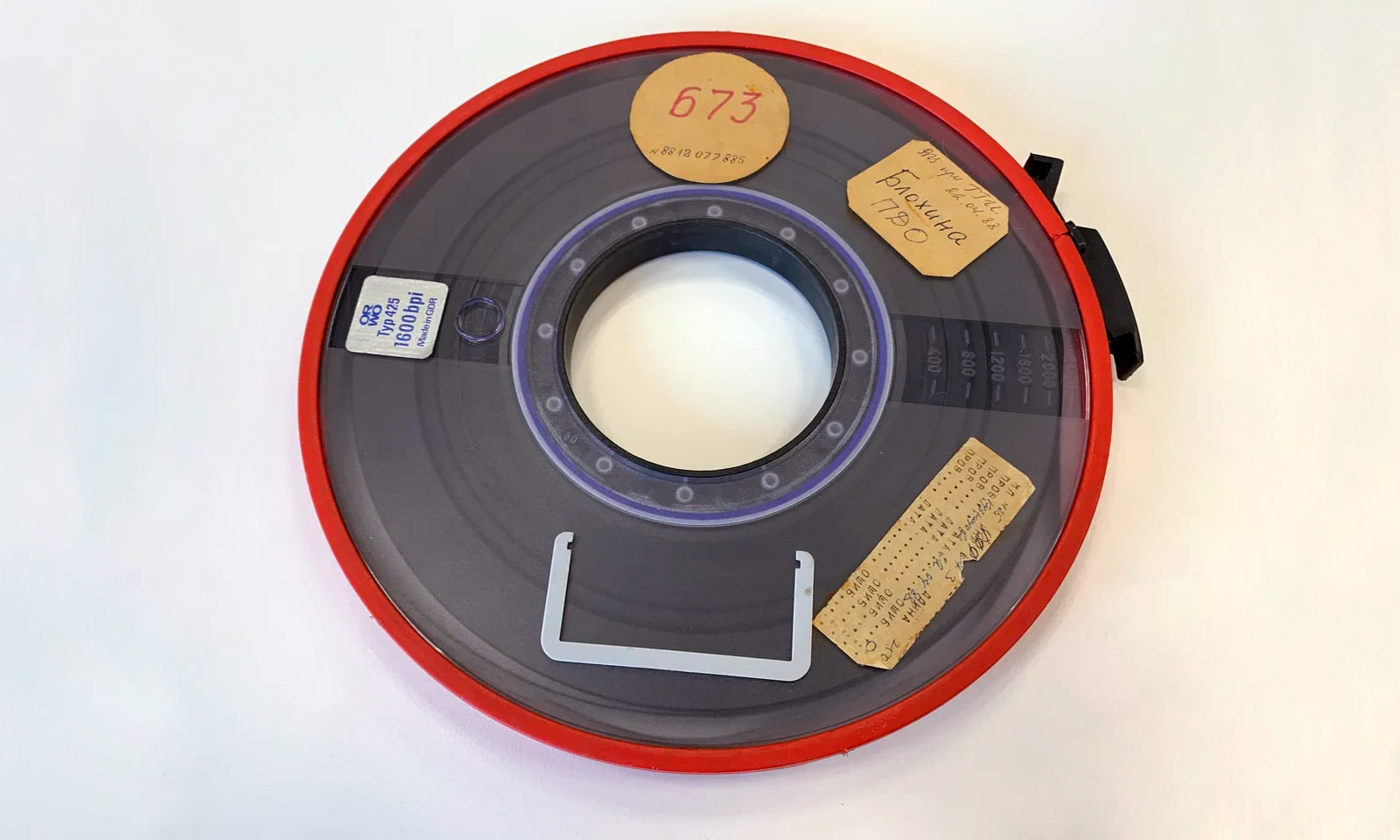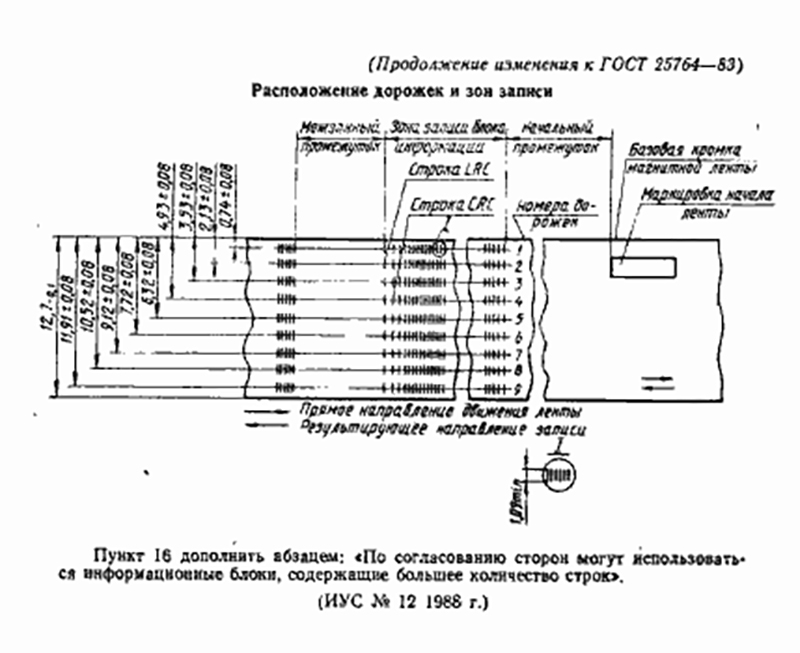DataArt Museum. Coils with OS 6.1 for EC computers

Another copy from our collection is magnetic tapes with an operating system for a series of Soviet computers, the EU computer .
The idea of a universal approach to the development of computer technology in the ministry of radio engineering of the USSR was discussed in the mid-1960s. In 1968, the design of the “Row” series began, which implied the creation of a single-architecture computer and the power modeled for the customer.
')
The beginning of the development of the "Series" was preceded by a principled discussion about the future path of designing Soviet computers. It ended with the report of the “chief programmer” of the USSR, academician Anatoly Dorodnitsyn , who proposed to take the IBM System 360 machine architecture as a basis. Dorodnitsin considered the decisive factor to be that there was enough software already running.

In total, four number series “Row” were designed, which included about 30 cars. All of them were produced or planned for release under the designation of the EU - "Single Series"
Machines equipped with a cloned version of the operating system IBM OS / 360. Her adaptation and Russification were hard. More often, everything was limited to comments in the accompanying documentation, which by the early 1980s had already accumulated about 100 volumes. Commands and text fields most often remained in English, the purpose of many utilities and subroutines was not always clear.
Mathematician Grigory Tseitin in the article "Results of the EU OS (User Notes)" summarizes two decades of evolution of the operating system, lists a number of achievements and draws attention to the problems with which he had to face. The overall result, unfortunately, is bleak: “it is possible, and sometimes you need to master individual samples of foreign software, but you cannot take the path of constant following them.”
Mikhail Shura-Bura, who in 1978 received the USSR State Prize in Engineering, was the scientific leader of the creation of the Soviet operating system based on the development of IBM.

"Patriarch of Soviet programming" Mikhail Shura-Bura became the prototype of Roman Oira-Oira - character of the Strugatsky brothers "Monday begins on Saturday"
The former director of NICEVT, the head company of the development of the EU series, Viktor Przhiyalkovsky, said that the OS 6.1 was the most popular. It began to develop in 1978 and presented at the exhibition of the EU and Small Computer Systems, held at VDNH in 1979. This system was installed on all machines of the second generation of the EC computer; under this OS, programming capabilities for Fortran, Kobol, PL / 1 were implemented (the name PL / 1 was not used in the USSR).

As follows from the information on the sticker placed on our film, OS 6.1 of performance 01 with changes 4 should be recorded on it. This is a later modified version of the system that supported hot backup and distribution of tasks in two and three-machine computing complexes.
According to the memoirs of system programmers, the OS was placed on one coil, tapes with additional libraries, DBMS and other additions could be attached to it. It depended on the system on which the OS was supposed to be installed.

Judging by the other coils that entered our collection along with the one shown in the photo, it was most likely intended for the computation center of the State Hydrological Institute.

The coils themselves were made in the GDR at the ORWO plant in Wolfen, near Leipzig. Before World War II, it was part of the AGFA corporation, and the processes of producing color films and photo printing were developed there. After the capitulation of Germany and its division into four occupation zones, the US military handed over the plant of photographic films to the representatives of the USSR, after seizing patents and documentation - they were transferred to Kodak and Illford Photo. Soviet specialists dismantled part of the plant and sent it to the USSR, but did not export all the equipment. Soon the plant returned to work and continued to produce film, and a little later began to produce magnetic tapes.

The magnetic tapes that were used for EC computers had nine tracks. This made it possible to write and read information byte-by-byte. The ninth track was intended to write a control byte. Width - 12.7 mm (that is, half an inch, refused to inch tape in the mid-1970s). The nominal data recording density is 32 bits per 1 mm. For other computers of that time, other standards were applied, and this one, like the EU computer architecture, was borrowed from IBM.

Computer ES-1020 at the Department of Applied Mathematics of the Physics and Mathematics Institute of the Leningrad Polytechnic Institute, mid-1980s. In the background are visible tape drives. Photo source
Rewind half inch tape carried on an empty reel (reel-to-reel). In accordance with GOST , the read / write speed was approximately 2 m / s, which at a recording density of 32 bits per 1 mm and eight data tracks gave a download speed of 64 kB / s. For reading, we used tape drives from a number of EU computer peripheral devices — for example, the EU-5010, which weighed 450 kg.

Layout of tracks and coil recording areas
It is clear that today a very limited circle of users stores information on magnetic tapes. However, for example, CERN allowed them to save on storage about 200 Petabytes of data obtained from the Large Hadron Collider. The magnetic tape turned out to be almost three times cheaper than hard drives, in addition, it has natural protection against unauthorized access - data from it cannot be read remotely.
Source: https://habr.com/ru/post/456962/
All Articles